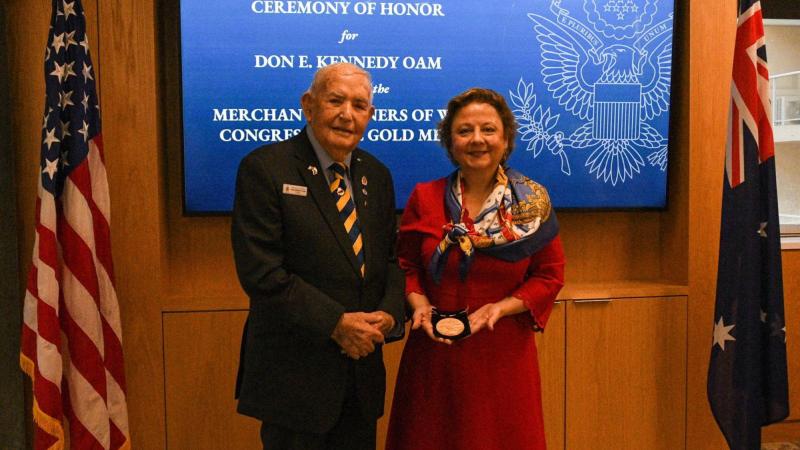The Morrison-McCormack Government will deliver a safer and more efficient Inland Rail whilst also backing thousands of extra jobs and billions in additional economic activity through major enhancements to the planning, design and delivery of Australia’s largest freight infrastructure project.
The improvements will deliver a stronger Inland Rail, with the design now including more than 4,500 additional culverts, nine additional viaducts, an additional 6.8 kilometres of bridges, 10 extra grade separations, approximately 450 kilometres of additional fencing, as well as removing 139 level crossings.
These enhancements are a result of significant work by the Australian Rail Track Corporation (ARTC) to progress designs, to engage with communities and undertake the detailed analysis required to build the 1,700 kilometre rail line, including approximately 600 kilometres of greenfield track.
The Deputy Prime Minister and Minister for Infrastructure, Transport and Regional Development Michael McCormack said the enhancements would lead to a safer and more efficient Inland Rail as well as deliver significant benefits for regional communities, businesses and jobs.
“Inland Rail is a jobs bonanza. It’s already supporting thousands of jobs, has already started to generate billions in economic activity and will eventually lead to a boost of more than $18 billion Gross Domestic Product during construction and in the first 50 years of operation,” the Deputy Prime Minister said.
“These enhancements will provide for greater local investment, mean Inland Rail will now support more than 21,500 jobs at the peak of construction and deliver an extra economic boost of $2 billion.
“Australian communities and industries have asked for more from this national infrastructure project and we have listened.
“These enhancements to the Inland Rail network will deliver more contracts for local businesses and more work for Australians at a time when we need them most.
“Inland Rail isn’t just being built by the big companies and Tier 1 contractors – across Australia businesses of all sizes are tendering for work and benefiting from the construction of Inland Rail.
“This world-class freight rail line from Melbourne to Brisbane will be the ‘spine’ of the national freight network, enabling travel between Melbourne and Brisbane in less than 24 hours, while connecting major ports and all mainland state capitals.”
Enhancements will be made possible through an additional injection of up to $5.5 billion of equity into ARTC.
Minister for Finance Simon Birmingham said the Morrison-McCormack Government’s investment in Inland Rail would be a game-changer to how freight is moved within Australia.
“Our ongoing investment in Inland Rail is backing jobs and businesses in regional Australia and will see the construction of a world-class freight network connecting Melbourne and Brisbane,” Minister Birmingham said.
“Every dollar our Government invests in Inland Rail is a dollar spent for the benefit of our regional communities, businesses, jobs and our economic recovery.
“This is about being responsive to the needs of the farmers, businesses and communities who will rely on Inland Rail.
“We’re making improvements to the design to deliver a more efficient network while at the same time supporting even more jobs and more economic activity.
“We’re going to have a mammoth freight task into the future – our urban freight task alone is expected to increase by nearly 60 per cent over the next two decades – and enhanced Inland Rail will ensure we have the capacity to meet Australia’s future freight needs.
“Enhanced Inland Rail will change the way we move freight in Australia, supporting the fast, reliable and cost-competitive movement of goods and resources. Our investment will strengthen supply chains, and better connect regional areas along the network with customers across Australia and the world.”
The first section of Inland Rail, between Parkes and Narromine, is now completed. In that section alone, more than 1,800 people worked on the project, including more than 762 local residents and 302 Indigenous workers. Almost $110 million was spent with local businesses, whilst 14,000 tonnes of Whyalla Steel worth $20 million was used.
Work has now started on the 171-kilometre Narrabri to North Star section, which will support thousands of jobs in north-western NSW and will use approximately 25,000 tonnes of Whyalla Steel and 341,000 Australian made concrete sleepers.
Planning is also well advanced on other sections of the track, with the Environmental Impact Statement (EIS) for the largest section between Narromine to Narrabri on public display and a further four statements expected to be released for the Queensland sections of Inland Rail in the coming months.
ARTC is also currently working with the New South Wales Government to respond to submissions made during the public exhibition of the North Star to Queensland Border EIS, which closed October 2020.
A report by EY found Inland Rail could boost gross regional product by a further $13.3 billion in today’s dollars and deliver up to 2,500 full time jobs in the 10th year of operation. This is from Australian businesses starting, growing and thriving along the Inland Rail alignment following construction and is in addition to the more than $18 billion boost to Gross Domestic Product and 21,500 jobs during peak construction.








